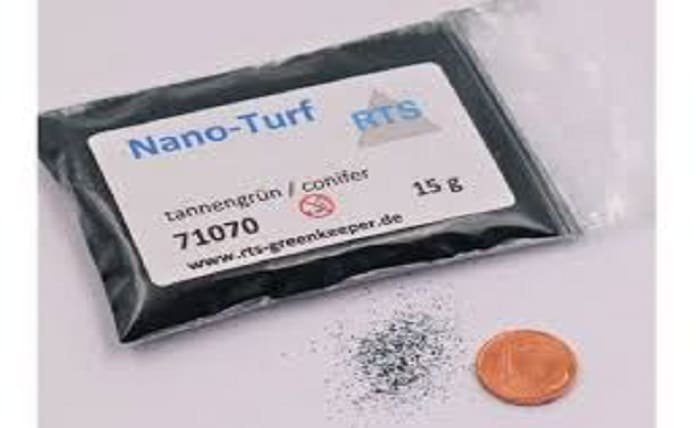
Introduction
NanoTurf is a cutting-edge artificial grass solution that has revolutionized the landscaping industry. Unlike traditional synthetic turf, NanoTurf incorporates advanced nanotechnology to enhance durability, aesthetics, and functionality. This comprehensive guide will delve into the various aspects of NanoTurf, from its benefits and applications to installation and maintenance.
Understanding NanoTurf can provide homeowners, businesses, and sports facilities with a superior alternative to natural grass. By exploring the innovative features of NanoTurf, you can make informed decisions about incorporating it into your landscaping projects.
The Evolution of Artificial Grass: From Traditional to NanoTurf
The development of artificial grass has come a long way since its inception in the 1960s. Traditional synthetic turf initially aimed to mimic the appearance of natural grass while providing a low-maintenance alternative. However, early versions often fell short in terms of durability and aesthetics. NanoTurf represents the latest advancement in this evolution, leveraging nanotechnology to address these shortcomings.
NanoTurf not only looks more realistic but also offers enhanced performance characteristics. This technological leap has made NanoTurf a popular choice for a variety of applications, from residential lawns to professional sports fields.
Key Features of NanoTurf
NanoTurf stands out due to its unique features, which set it apart from conventional artificial grass. One of the most notable features is its enhanced durability. NanoTurf fibers are designed to withstand heavy foot traffic, making it ideal for both residential and commercial use. Additionally, the advanced UV protection integrated into NanoTurf prevents color fading, ensuring a lush green appearance year-round.
Another significant feature of NanoTurf is its superior drainage system. Unlike traditional turf, which can become waterlogged, NanoTurf allows for efficient water flow, reducing the risk of puddles and mud. These key features make NanoTurf a versatile and practical solution for various landscaping needs.
Benefits of Using NanoTurf
There are numerous benefits to choosing NanoTurf for your landscaping projects. Firstly, NanoTurf offers a low-maintenance alternative to natural grass, eliminating the need for mowing, watering, and fertilizing. This not only saves time but also reduces water consumption, making it an environmentally friendly choice.
Secondly, NanoTurf provides a consistently green and manicured appearance, regardless of weather conditions. Its durability ensures that it can withstand heavy use, making it perfect for areas that experience high foot traffic. Additionally, NanoTurf is hypoallergenic, making it a safe option for households with pets and children.
Applications of NanoTurf in Residential Landscaping
NanoTurf is an excellent choice for residential landscaping due to its versatility and aesthetic appeal. Homeowners can use NanoTurf to create lush, green lawns that require minimal upkeep. It is also ideal for creating play areas for children, as it provides a soft and safe surface for play.
Moreover, NanoTurf can be used to enhance outdoor living spaces, such as patios and terraces. Its realistic appearance and durability make it a popular choice for creating beautiful, functional outdoor areas. By incorporating NanoTurf into your home landscaping, you can enjoy a pristine yard without the hassle of traditional lawn care.
NanoTurf in Commercial and Public Spaces
Commercial and public spaces can greatly benefit from the use of NanoTurf. Parks, playgrounds, and sports facilities are just a few examples where NanoTurf can provide a high-performance, low-maintenance solution. Its durability ensures that it can withstand the wear and tear associated with heavy use in public areas.
NanoTurf is also an excellent choice for commercial properties, such as office complexes and retail centers. It enhances the aesthetic appeal of these spaces while minimizing maintenance costs. By choosing NanoTurf, businesses can create attractive, functional outdoor areas that require minimal upkeep.
The Role of NanoTurf in Sports Facilities
Sports facilities require high-performance surfaces that can withstand intense use. NanoTurf is designed to meet these demands, making it an ideal choice for various sports applications. From soccer fields to tennis courts, NanoTurf provides a durable, consistent playing surface that enhances performance and safety.
One of the key advantages of NanoTurf in sports facilities is its superior drainage capabilities. This ensures that fields remain playable even after heavy rain, reducing downtime and maintenance. Additionally, the realistic appearance and feel of NanoTurf provide an optimal playing experience for athletes.
Installation Process of NanoTurf
The installation of NanoTurf involves several steps to ensure a smooth, durable surface. The first step is site preparation, which includes removing existing grass and debris, and leveling the ground. Next, a base layer of crushed stone or gravel is laid to provide a stable foundation.
Once the base is prepared, the NanoTurf is rolled out and cut to fit the area. The edges are secured using landscaping nails or adhesive, and the seams are carefully joined to create a seamless appearance. Finally, infill material, such as sand or rubber granules, is added to help the fibers stand upright and provide cushioning. Following these steps ensures a successful NanoTurf installation.
Maintenance Tips for NanoTurf
While NanoTurf requires significantly less maintenance than natural grass, regular care is still necessary to keep it looking its best. Routine maintenance includes brushing the fibers to prevent matting and remove debris. This helps maintain the upright position of the fibers and keeps the surface looking fresh.
Periodic rinsing with water can help remove dust and dirt, while spot cleaning may be needed for spills or stains. Additionally, it is important to check for and address any minor repairs promptly to prevent further damage. By following these maintenance tips, you can ensure that your NanoTurf remains in excellent condition for years to come.
Environmental Impact of NanoTurf
Choosing NanoTurf can have positive environmental impacts. One of the primary benefits is water conservation, as NanoTurf does not require watering like natural grass. This can result in significant water savings, especially in regions prone to drought.
Additionally, NanoTurf reduces the need for pesticides and fertilizers, which can have harmful effects on the environment. The elimination of mowing also reduces greenhouse gas emissions from lawnmowers. By opting for NanoTurf, you can contribute to environmental sustainability while enjoying a beautiful, low-maintenance lawn.
Conclusion:
NanoTurf represents a significant advancement in artificial grass technology. Its innovative features, such as enhanced durability, superior drainage, and realistic appearance, make it an ideal choice for various applications. Whether for residential landscaping, commercial properties, or sports facilities, NanoTurf offers numerous benefits that traditional grass cannot match.
By understanding the many facets of NanoTurf, from its installation to its environmental impact, you can make an informed decision about incorporating it into your outdoor spaces. Embrace the future of landscaping with NanoTurf and enjoy a beautiful, functional, and sustainable solution.
FAQs
1. What is NanoTurf? NanoTurf is an advanced artificial grass solution that utilizes nanotechnology to enhance durability, aesthetics, and functionality, making it suitable for various applications.
2. How does NanoTurf differ from traditional artificial grass? NanoTurf offers superior durability, UV protection, and drainage capabilities compared to traditional artificial grass, making it a more practical and aesthetically pleasing option.
3. What are the benefits of using NanoTurf in residential landscaping? NanoTurf provides a low-maintenance, durable, and hypoallergenic alternative to natural grass, enhancing the beauty and functionality of residential lawns and outdoor spaces.
4. How is NanoTurf installed? The installation process involves site preparation, laying a stable base, rolling out and securing the NanoTurf, and adding infill material to ensure a smooth and durable surface.
5. What environmental benefits does NanoTurf offer? NanoTurf conserves water, eliminates the need for pesticides and fertilizers, and reduces greenhouse gas emissions from lawn maintenance, contributing to environmental sustainability.




